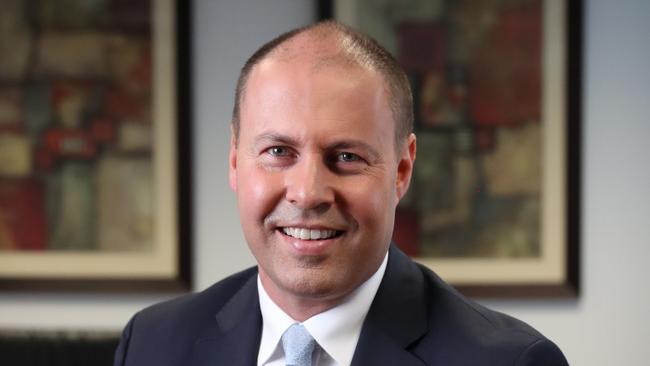Tax benefits will land too late for voters
The Coalition stands to get no credit from its tax cuts last year, which will benefit most taxpayers as refunds, after the election.

Most Australians earning less than $125,000 are ahead of where they were four years ago thanks to last year’s tax cuts, but the benefits won’t be realised before the federal election.
The tax cuts eliminated the effect of inflation pushing more income into higher brackets, new modelling shows. But because they have been delivered as offsets rather than as normal tax cuts with changes to the tax schedule, the benefits won’t be felt until July and August when they appear as additional refunds after people have filed their 2018-19 returns.
The new modelling comes as duelling tax cuts look set to be the key political battleground of budget week.
The government has flagged additional tax cuts in tomorrow’s budget, while later this week Labor is expected to offer more for those on lower incomes while sticking with its plan to hit those at the top of the tax schedule with a penalty 2 per cent surcharge.
Opposition Treasury spokesman Chris Bowen yesterday pledged that a future Labor government would be in a position to offer bigger tax cuts and bigger surpluses than the Morrison government. “You can afford tax cuts when you’ve made the right decisions elsewhere in the budget, like we have. Difficult decisions to get the budget back into surplus like negative gearing reform, capital gains tax reform, dividend imputation refundability reform and family trusts as well,” Mr Bowen said.
“ We can contemplate the sorts of important investments in health and education, as well as bigger tax cuts as well as bigger surpluses because we’ve been prepared to make those decisions.”
Deloitte Access Economics partner Chris Richardson said the government was not getting the credit for what had been delivered in last year’s tax plan.
“They’ve over-delivered for two-thirds of taxpayers and left a burden for higher-income earners,” he said.
Deloitte modelling shows that last year’s tax cuts left everyone earning between $37,000 and the $125,000 mark, at which the offset phases out, paying less tax than they would under the tax schedules in 2014-15, which was the Coalition’s first budget.
Workers earning between $18,000 and $37,000 are paying fractionally (0.3 per cent) more, because the lower threshold has not been adjusted. People in the top tax bracket are paying 2.7 per cent more.
Although the Deloitte analysis shows people in the second top bracket from $90,000 to $180,000 are paying less, Mr Richardson said it is really only those earning less than $125,000 who have received a tax cut while everyone earning more than that is paying more.
Last year’s budget structured the tax cuts to middle- and lower- income earners as an offset rather than as a normal tax cut because Treasury did not believe there were the available funds in the budget to deliver a tax cut in 2018-19.
The offset starts off at $200 a year for people earning less than $37,000 and rises to $530 for people earning between $48,000 and $90,000.
It then phases out at $125,000. At its maximum, it is worth slightly more than $10 a week.
The one threshold change taking immediate effect was to raise the point at which the 37 per cent tax rate cuts in to $90,000.



To join the conversation, please log in. Don't have an account? Register
Join the conversation, you are commenting as Logout